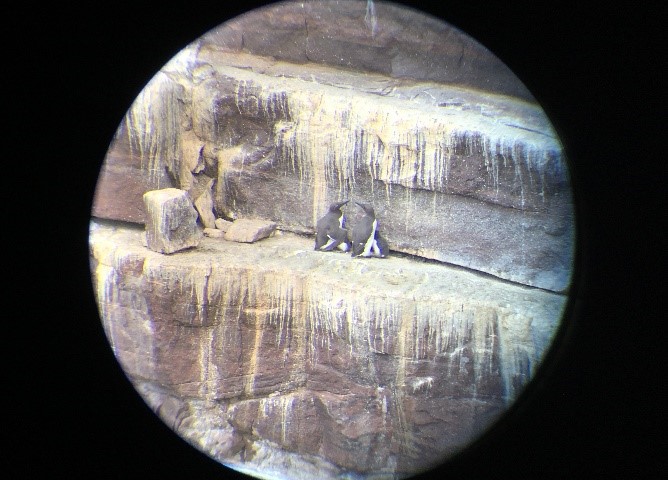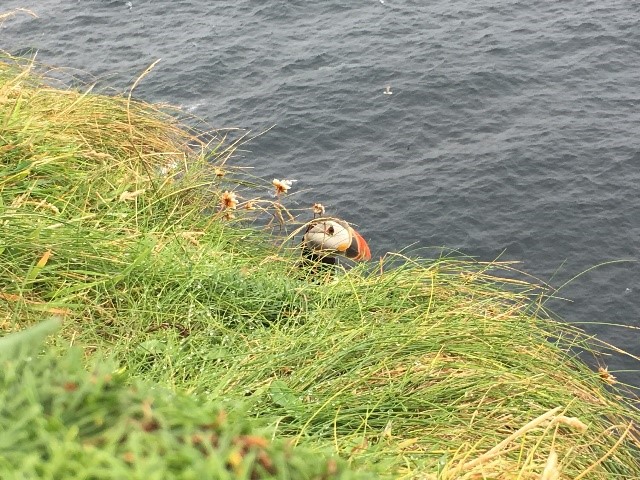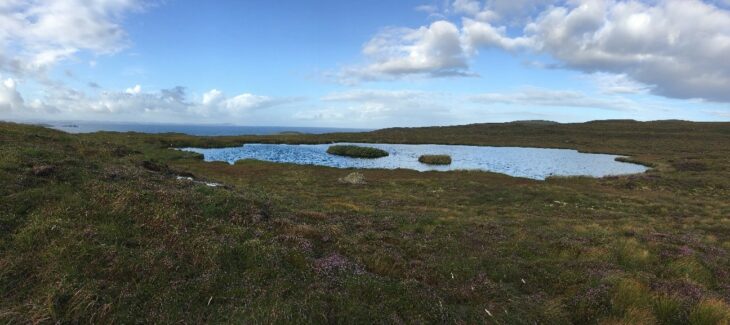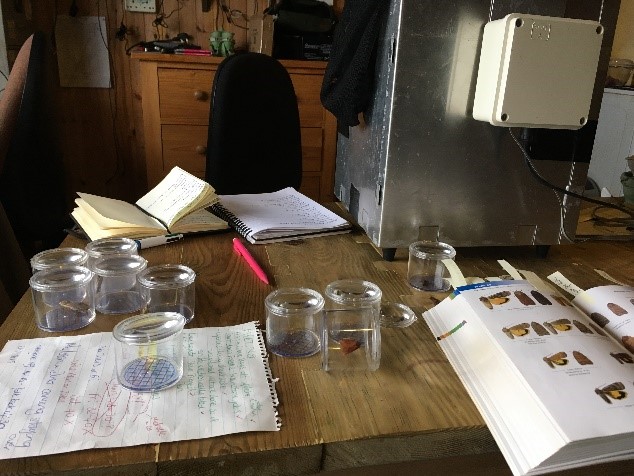Volunteering & amazing results at Handa Island
I would like to share my experience on Handa Island. My name is Erika and I am volunteering with the Scottish Wildlife Trust on an Erasmus+ funded European Voluntary Service placement for a year working on our highland reserves.
Handa is an extraordinary island and during August I got the chance to go there for three separate weeks. Knowing this I was so excited to visit even though it was at the end of the season when the seabirds were starting to leave.

My main duties were to help with boardwalk repairs, welcoming visitors and helping with the clean-up of the island, but I spent as much spare time as possible watching wildlife; wherever you look you will always see something interesting. At the cliffs I saw the very late puffins and many other kinds of breeding seabirds. Predators such as bonxies and great black-backed gulls were waiting for the best moment to approach the cliffs where the chicks and fledglings from many species such as guillemots, razorbills, gulls and kittiwakes might be unattended.

I really enjoyed observing Arctic skuas at the end of the season because adults are teaching their young how to steal the food from other birds.
As you walk around the boardwalk loop you can find lots of lizards and caterpillars whilst at some of the lochs (and being careful to not disturb them) there are red throated divers. In the heather are red grouse. At Boulder Bay, regardless of the time of day, there are usually grey seals bottling with their noses upright out of the water.

What I really enjoyed the most was trying to see nocturnal and crepuscular wildlife. I checked a moth trap every morning with the rangers and I kept seeing tracks of the sneaky otters but did not see any individuals. I have recently been introduced to the bat world and I find it very interesting. During my first week I read old ranger reports trying to find bat records for the island during the last years. Only common and a couple of soprano pipistrelle bats were found in the reports. I decided to come back with a couple of static broadband bat detectors to analyse the sonograms and see which species are foraging on the island.
I confirmed the presence of those two species but I also got Daubenton’s bat – at least two individuals recorded one night by the side of the bothy and another night in the loch behind the bothy. We do not know where they roost, they could be coming from the mainland or from the caves found in the cliffs. I actually had very high activity levels throughout the whole night in the cliffs at Poll Ghlup which is very interesting because of the presence of predators (birds), the absence of food and the lack of shelter from the prevailing wind.

I definitely need to come back to this island and find out more about these bats and extraordinary wildlife!
Erika Faggiani, European Voluntary Service volunteer
Help protect Scotland’s wildlife
Our work to save Scotland’s wildlife is made possible thanks to the generosity of our members and supporters.
Join today from just £3 a month to help protect the species you love.
Preface
I would like to share my experience on Handa Island. My name is Erika and I am volunteering with the Scottish Wildlife Trust on an Erasmus+ funded European Voluntary Service …
